November 4, 2022, marks a century since one of the most monumental moments in archaeology: the unearthing of King Tutankhamun’s tomb by Howard Carter. This centennial celebration illuminates the enduring fascination with the boy king, whose reign was brief but whose legacy continues to captivate the world.

Among the treasures discovered within Tutankhamun’s tomb, none are more iconic than the golden sarcophagus and death mask. Crafted with unparalleled artistry, these artifacts symbolize ancient Egyptian opulence and artistic mastery. The meticulously inlaid coffins, including one crafted entirely from solid gold, encased the mummified remains of the young pharaoh, ensuring his eternal journey into the afterlife.
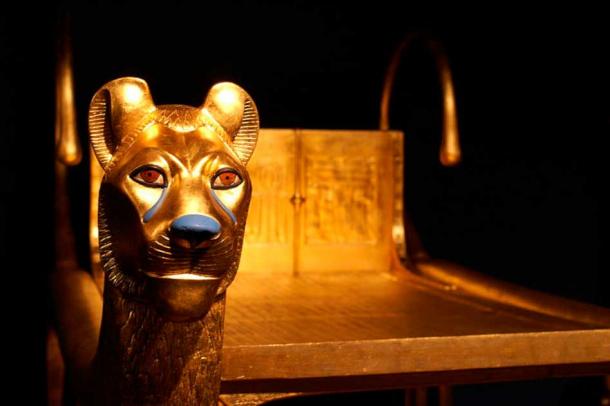
Detail of the ritual bed from Tutankhamen’s tomb, replica ( Mikhail / CC by SA 3.0 )
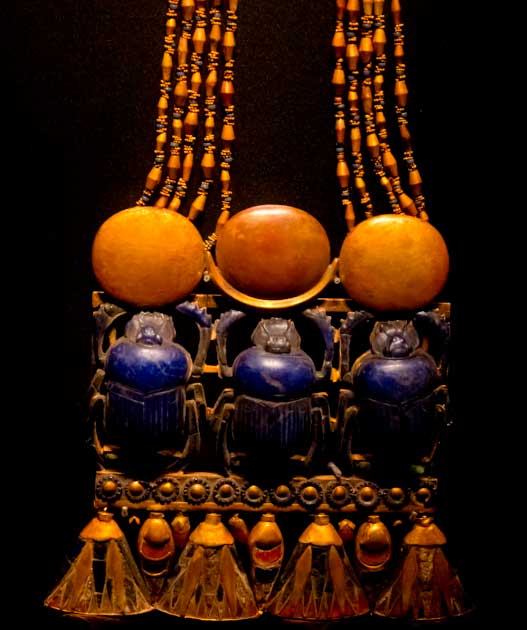
Pectoral with Three Scarabs, Tomb of Tutankhamun ( Dmitry Denisenkov / Flickr)
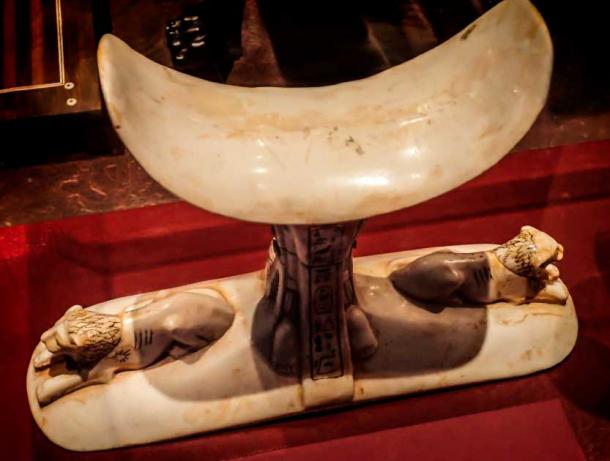
An ivory headrest with two recumbent lions. Photographed at the Discovery of King Tut exhibit at the Oregon Museum of Science and Industry in Portland, Oregon. ( Mary Harrsch / Flickr) The headrest was the ancient Egyptian equivalent of a pillow , and was designed to keep the head elevated during sleep.
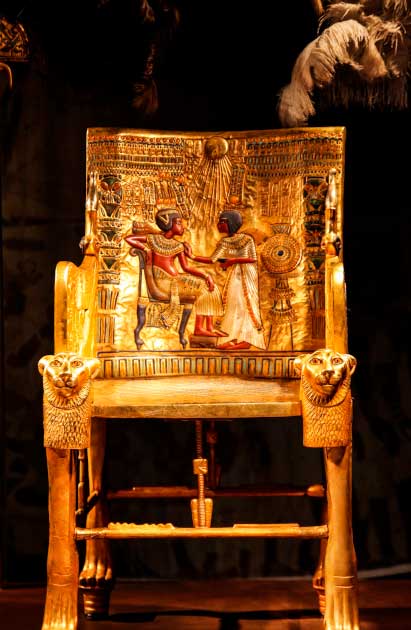
Golden throne found in Tutankhamun’s tomb. A scene from the daily life of the pharaoh is depicted on the front of the throne: the young Tutankhamun sits in a relaxed pose, while his wife Ankhesenamun rubs her husband’s shoulder with fragrance oils. ( Public Domain )
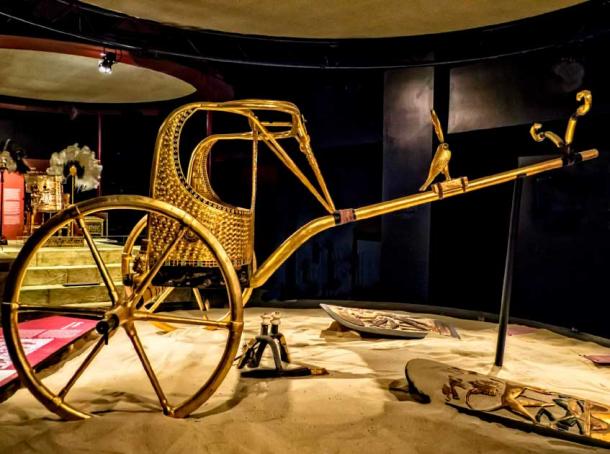
One of six chariots found in Tutankhamun’s tomb. These meticulously created reproductions were photographed at The Discovery of King Tut” exhibition in New York City. ( Mary Harrsch / Flickr)

The Anubis Shrine was found guarding the entrance of Tutankhamun’s tomb. An Anubis statue sits atop a trapezoidal altar made of gilded wood. Egyptian Museum, Cairo. ( kairoinfo4u / Flickr)
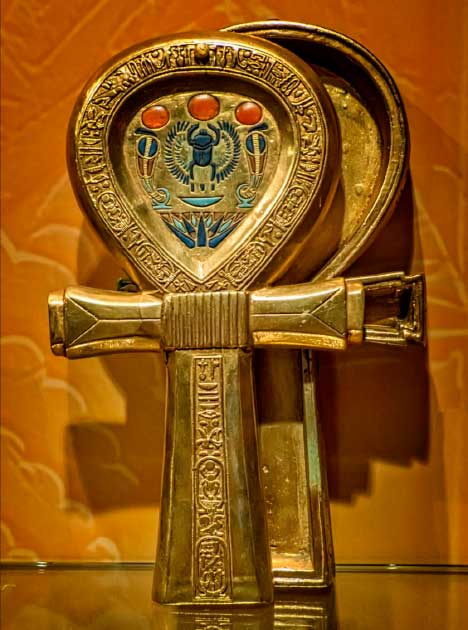
Makeup box in the shape of an ankh from King Tutankhamun’s tomb. Photographed at The Discovery of King Tut exhibition in New York City. ( Mary Harrsch / Flickr)
Yet, beyond these renowned treasures lay a trove of more than 5,000 artifacts, each offering a glimpse into the opulent world of ancient Egypt. From ornate chariots to intricately crafted furniture adorned with gold and precious stones, every aspect of Tutankhamun’s life and afterlife was meticulously prepared. Royal thrones, couches, and ritual beds adorned with exquisite detail exemplify the grandeur of the young king’s reign.
Jars filled with rare perfumes, precious oils, and ointments, alongside chests brimming with priceless jewelry and garments of fine linen, underscore the luxury that accompanied Tutankhamun into the afterlife. Elaborate shrines dedicated to the gods, including the Canopic jars safeguarding the pharaoh’s preserved organs, speak to the religious beliefs intertwined with Egyptian funerary practices.
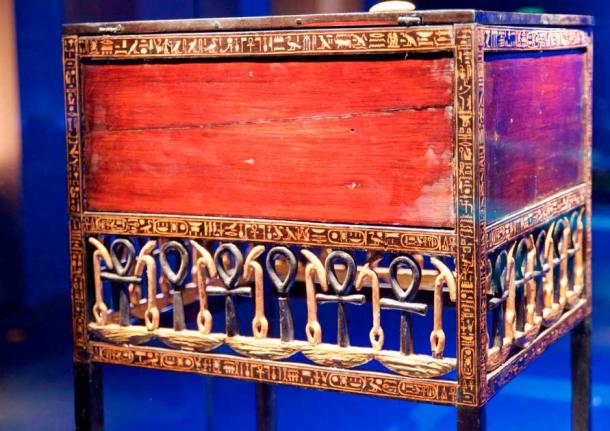
A legged hieroglyphic chest from Tutankhamun’s tomb ( Bill Abbott / Flickr)
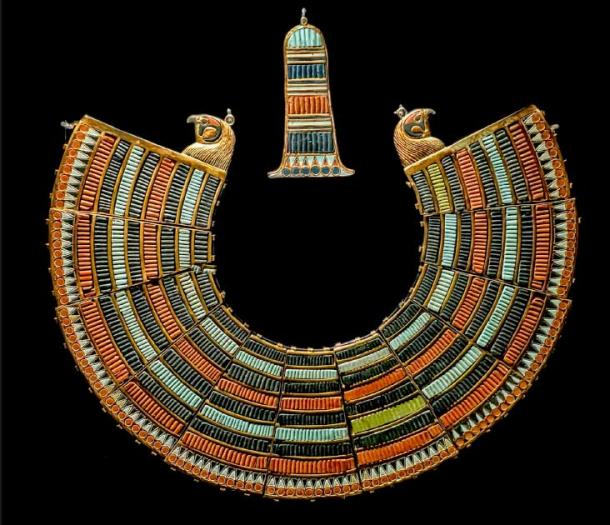
Collar of semi-precious stones with falcon-headed terminals found on the mummy of King Tutankhamun. Photographed at The Discovery of King Tut” exhibition in New York City. ( Mary Harrsch / Flickr)
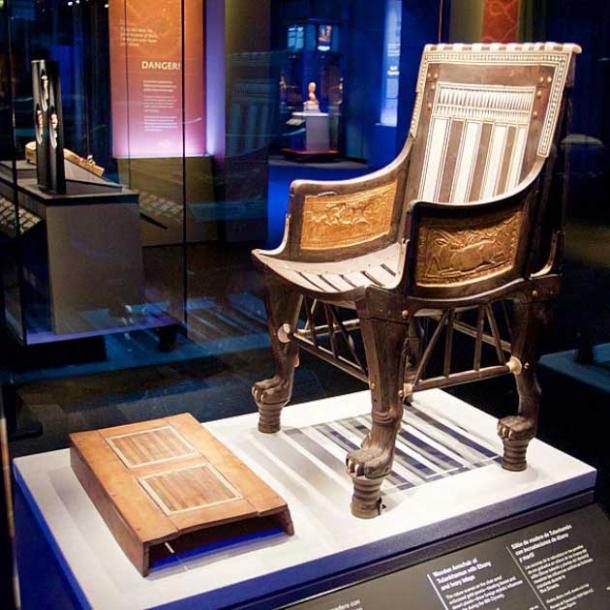
Child-sized chair and footstool made of ebony inlaid with ivory found in Tutankhamun’s tomb, which he may have used as a child. Photographed at the Discovery of King Tut exhibit at the Oregon Museum of Science and Industry in Portland, Oregon. ( Bill Abbott / CC by SA 2.0)

Cosmetic oil vessel with the representations of Nile gods symbolically uniting Upper and Lower Egypt, alabaster, gold, ivory, from the tomb treasure of Tutankhamun. Egyptian Museum, Cairo ( Djehouty / CC by SA 4.0 )

Ivory rattle and ornate reed pen case found in King Tut’s tomb. Photographed at the Discovery of King Tut exhibit at the Oregon Museum of Science and Industry in Portland, Oregon. ( Mary Harrsch / Flickr)
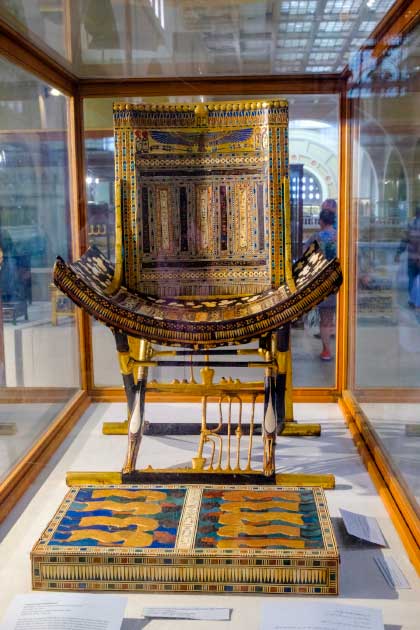
An ornate golden throne and footrest from Tutankhamun’s tomb ( Mirko / Adobe Stock)
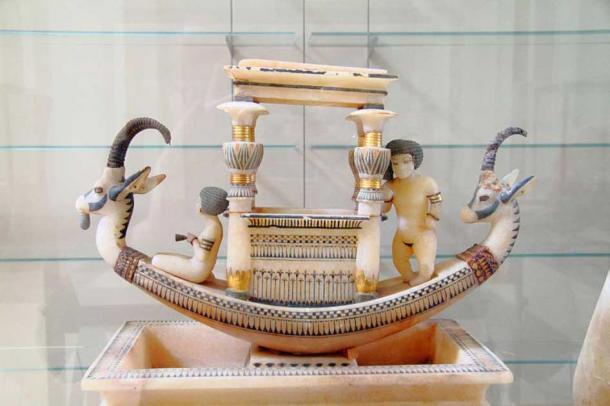
Alabaster and ivory boat statue from the tomb treasure of king Tutankhamun. Egyptian Museum, Cairo. ( Djehouty / CC by SA 4.0 )
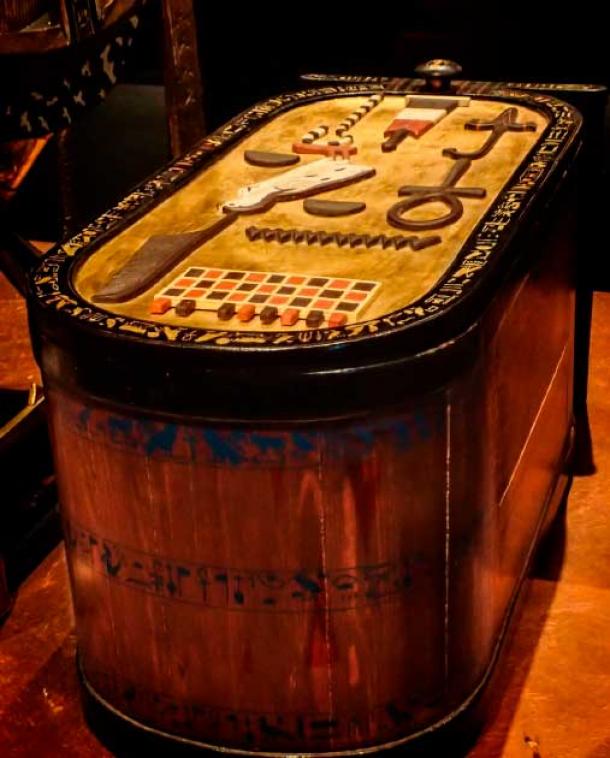
Storage chest in the form of a cartouche found in King Tut’s tomb. Photographed at the Discovery of King Tut exhibit at the Oregon Museum of Science and Industry in Portland, Oregon. ( Mary Harrsch / Flickr )
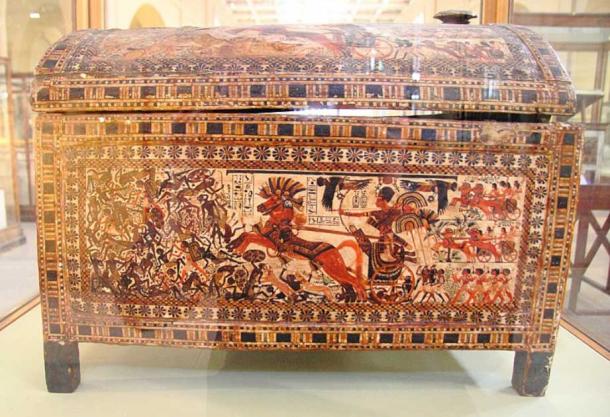
Ornate storage chest from the tomb treasure of King Tutankhamun, stuccoed and painted wood. Egyptian Museum, Cairo. ( Djehouty / CC by SA 4.0 )
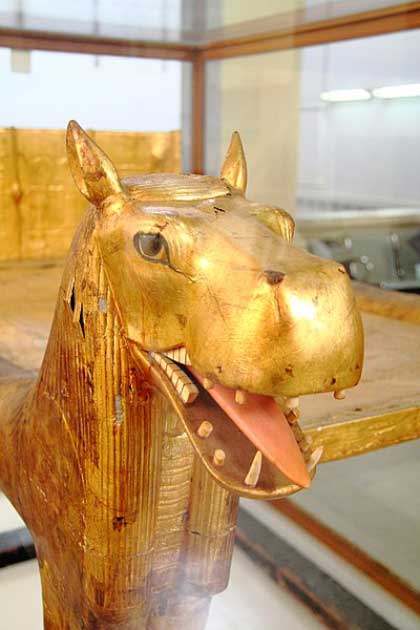
Detail of a golden animal head from a ritual bed found in the tomb treasure of King Tutankhamun. Egyptian Museum, Cairo. ( Djehouty / CC by SA 4.0 )
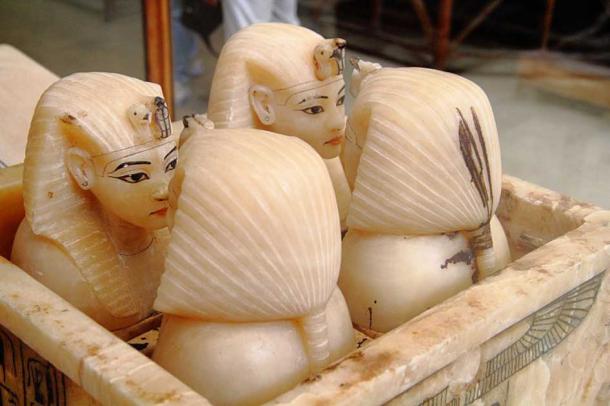
Four canopic jars containing Tutankhamun’s internal organs – lungs, stomach, intestines and liver. Four goddesses protected the shrine – Neith to the north, Selkis to the south, Isis to the west and Nephthys to the east. ( Djehouty / CC by SA 4.0 )
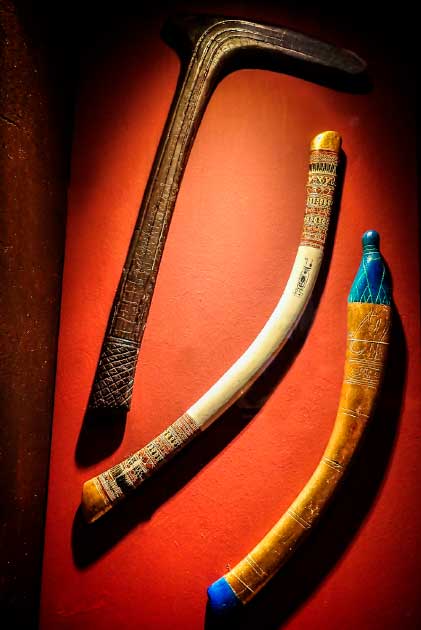
Throwing sticks found with King Tut’s hunting equipment although the center one made of ivory and the lower one with gold and faience terminals would have been only used for ceremonial purposes. Photographed at the Discovery of King Tut exhibit at the Oregon Museum of Science and Industry in Portland, Oregon. ( Mary Harrsch / Flickr )
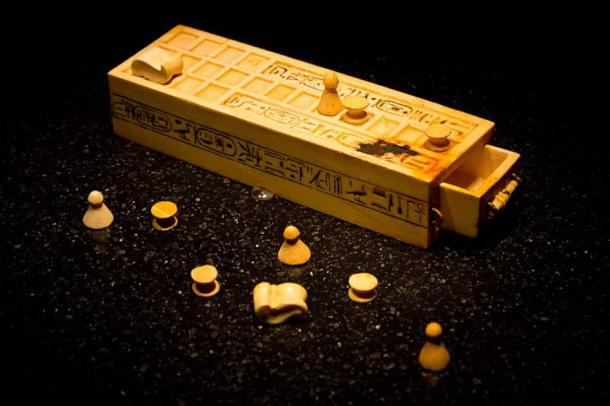
A game box and pieces for playing the game of the Royal Game of Ur found within the tomb of Tutankhamun. This photo was taken at the King Tut exhibition at the Pacific Science Center in Seattle, Washington State, USA. ( ddenisen / CC by SA 2.0 )
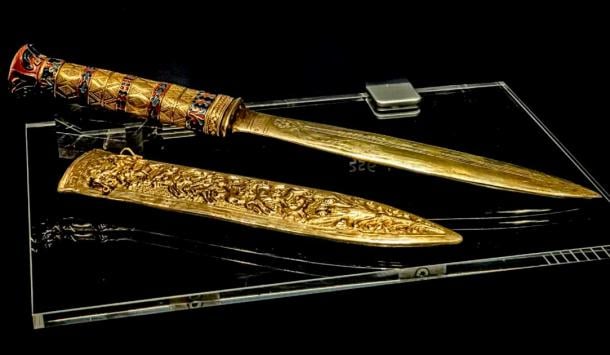
Gold dagger found in a girdle around the hips of King Tutankhamun’s. Photographed at The Discovery of King Tut” exhibition in New York City. ( Mary Harrsch / Flickr)
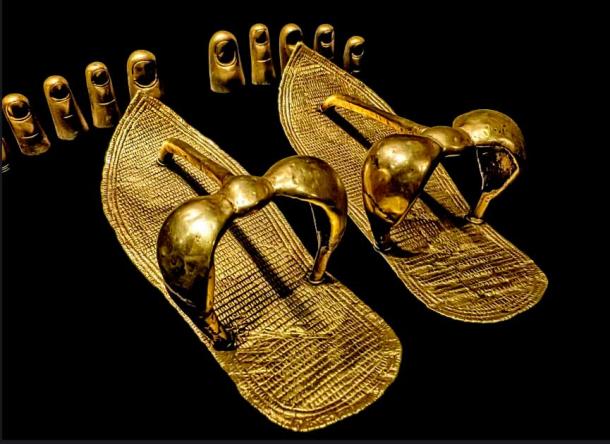
King Tutankhamun’s gold sandals and toe covers. Photographed at The Discovery of King Tut” exhibition in New York City. ( Mary Harrsch / Flickr)
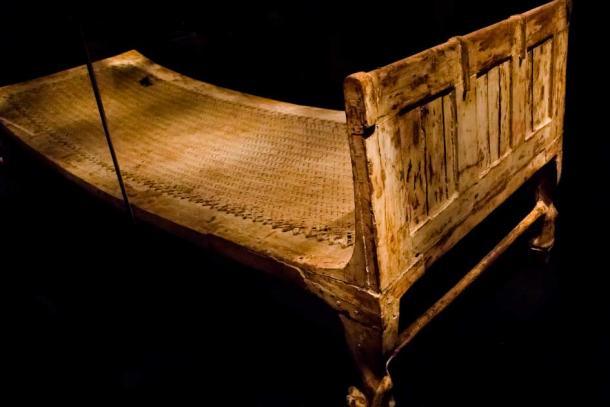
Tutankhamun’s bed from his tomb treasures ( Dmitry Denisenkov / Flickr)
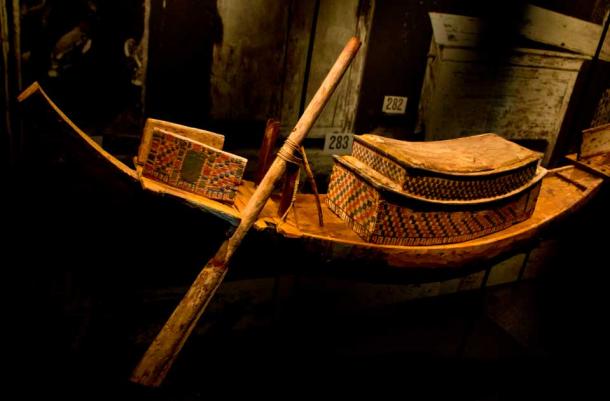
One of 35 model boats found in Tutankhamun’s tomb ( Dmitry Denisenkov / Flickr)
Top image: Elaborate Box with Cartouche of Amenhotep III found in Tutankhamun’s tomb. ( Dmitry Denisenkov / Flickr)
Musical instruments, writing implements, and board games reflect the cultural richness of ancient Egypt, while items of personal adornment, such as ornate walking sticks and intricate jewelry, offer insights into Tutankhamun’s daily life and royal status.
The discovery of Tutankhamun’s tomb not only shed light on a pivotal period in ancient history but also captured the imagination of generations. As we commemorate the centennial of this extraordinary archaeological find, we continue to marvel at the enduring legacy of King Tut and the timeless splendor of ancient Egypt.